Q
bilakah proton saga pertama dilancarkan
Proton Saga was first introduced in 1985. It is a classic model from the Malaysian car brand Proton, and since its debut, it has been widely popular in the Malaysian market. It is known for its affordability, practicality, and high reliability, making it the car of choice for many Malaysian families. Over the years, Proton Saga has undergone continuous updates and improvements to meet market demands and adapt to technological advancements.
Special Disclaimer: This content is published by users and does not represent the views or position of PCauto.
Related Q&A
Q
How much does it cost to maintain a Proton Saga 2022?
Based on Proton Saga 2022's official maintenance guidelines and real-world conditions in the Malaysian market, the annual upkeep costs for this car typically range from RM800 to RM1,200, though this figure can vary significantly depending on your annual mileage and the specific services required. Of course, this depends heavily on your mileage and the specific services you opt for. For regular servicing – think oil changes, oil filter replacements, and the basics – you're looking at around RM200 to RM300 per session. When it comes time for a major service, which might involve changing brake fluid, transmission oil, and other key components, expect to shell out between RM500 and RM800.
Being a homegrown Malaysian brand, Proton Saga benefits from relatively affordable零部件 prices and an extensive network of service centers, which definitely helps keep long-term ownership costs in check. Sticking to regular maintenance isn't just about prolonging your car's lifespan; it's crucial for keeping you safe on the road too. We always recommend following the maintenance manual to the letter and choosing authorized Proton service centers – that way, you're guaranteed genuine parts and professional expertise under the hood. And if you're watching your wallet, keep an eye out for Proton's occasional service promotions; they can help you trim those costs even further.
Q
What is the warranty on the 2022 Proton Saga?
The 2022 Proton Saga comes with a solid 5-year or 150,000 km factory warranty (whichever comes first), covering key components like the engine and transmission. The anti-rust warranty stretches to 7 years with unlimited mileage. This warranty package is pretty competitive in Malaysia's compact car segment and should help keep long-term ownership costs in check for drivers.
Important to note though – to keep that warranty valid, you've gotta stick to regular servicing at authorized Proton service centers. Skipping that could void your coverage, so make sure you hold onto all those service records, folks. On top of that, Proton throws in 24-hour roadside assistance for extra peace of mind when you're out and about.
Malaysia's hot and rainy weather can really test a car's durability, so going for a model with a lengthy warranty just makes smart sense. Other local players like Perodua also offer similar long-haul warranty deals, so it's worth shopping around before making your final decision.
Q
What is the resale value of a Proton Saga?
The Proton Saga, one of Malaysia's most beloved budget-friendly sedans, sees its used car value fluctuate pretty noticeably based on the model year, mileage, condition, and market demand. Industry data shows that a 3-year-old Saga typically retains around 50-60% of its original price, and even at 5 years old, it's still holding steady at roughly 40%. That actually outperforms some competitors in its class, thanks to its low maintenance costs, widespread after-sales network, and solid market reputation.
Something to keep in mind: top-spec trims like the Premium S, with their extra features, usually hold 5-8% more value than the base models. And a Saga with a complete, regular service history? That can fetch a 10% premium when you resell. If you're looking to boost your car's resale value, it's smart to hang onto those service records from when it was under the factory warranty and steer clear of major modifications that mess with the original specs.
Also, the Saga's 1.3L engine paired with that tried-and-tested gearbox delivers reliable fuel efficiency – a big checkmark for used car buyers. Malaysia's second-hand car market keeps steady demand for practical, economical rides like the Saga, especially among first-time car owners. So, price it right, and your used Saga should move pretty quick.
Q
Is the 2022 Proton Saga a good first car?
The 2022 Proton Saga makes total sense as a first car. It's got a solid rep in Malaysia for being a great value workhorse – easy on the wallet to buy, even easier to keep running, which is perfect if you're a first-time buyer watching your budget. Under the hood, you've got a 1.3L naturally aspirated engine. Now, it's no rocket ship, but trust me, it's more than enough for zipping around town on your daily commute.
Space-wise, for a small sedan, it's surprisingly roomy. You can squeeze five adults in there without too much hassle, and the boot? A decent 420 liters – plenty for family errands or a weekend getaway. Safety kit? It's got the basics covered: ABS, EBD, and dual airbags. Nothing flashy, but exactly what you'd expect in this price bracket.
One thing that really works for the Saga is Proton's service network. They're all over the country, so getting it serviced or fixed is a breeze. Parts are easy to come by and won't break the bank, which is a big plus when you're just starting out.
Driving it? Super laid-back. The steering is light, the size is just right – not too big, not too small – so navigating tight city streets and squeezing into parking spots is a cinch, even for new drivers. I also dig that they've kept the traditional physical buttons. No messing around with finicky touchscreens for every little thing; you just reach out and press – simple and intuitive. That's a big win for folks who value functionality over fancy tech.
Now, if you're all about the latest gadgets, you might wanna look at something more upmarket. But as an entry-level family car, the 2022 Saga is a really down-to-earth choice. And hey, let's not forget Malaysia's weather – hot and humid with those monsoon downpours. Proton's tweaked the air-con to blow nice and cold, and the body's rust-proofed to handle the elements. It's like they built it specifically for our local conditions. Can't argue with that.
Q
Does the 2022 Proton Saga have push-to-start?
The 2022 Proton Saga doesn't come with push-to-start ignition; this entry-level sedan sticks with the traditional keyed system. The focus here is on practical features instead, like the standard 7-inch touchscreen, Bluetooth connectivity, and reverse camera. For Malaysian buyers, push-to-start is usually reserved for higher-spec models or B-segment and above – you'll find it on the Proton X50 or X70, for example, where it adds that extra layer of convenience.
Sure, it misses out on keyless entry, but the Saga still holds its ground as one of the country's best-selling national cars thanks to its wallet-friendly price tag, impressive fuel economy (5.6L/100km), and Proton's solid after-sales network. If push-to-start is a must-have for you, third-party kits are available, but keep in mind this might affect your factory warranty. Your safest bet? Go through a Proton authorized service center for the retrofit.
Truth be told, in Malaysia's hot and humid climate, a good old mechanical key can be more reliable. That's probably why plenty of budget-friendly cars still stick with this tried-and-tested setup.
Q
How does the 2022 Proton Saga compare to the Perodua Bezza?
Malaysia's favorite B-segment sedans for 2022, the Proton Saga and Perodua Bezza, each bring their own strengths to the table. The Saga packs a 1.3L four-cylinder engine churning out 95PS, paired with a 4AT gearbox. It delivers smooth power delivery and a comfort-tuned chassis, making it a solid family hauler. ABS and dual airbags come standard across the range, with the higher trims adding stability control. The interior leans into practicality, and space-wise, it has the Bezza beat.
On the flip side, the Bezza offers a choice of 1.0L and 1.3L engines. ISOFIX child seat anchors are standard across all variants, and the top-spec model gets the ASA 3.0 driver assistance suite, giving it an edge in tech. However, rear passenger space can feel a bit tight.
Both models tick the boxes for Malaysian buyers looking for economy and practicality. The Saga wins on value-for-money and interior room, while the Bezza shines brighter when it comes to fuel efficiency and active safety tech. It's worth noting both have scored a 4-star ASEAN NCAP safety rating, so you're covered on that front. Ultimately, the choice boils down to your priorities and budget. If you want a bit more engagement behind the wheel, take the Saga for a spin. But if low running costs are your main focus, the Bezza is the way to go.
Q
Is the 2022 Proton Saga comfortable for long drives?
The 2022 Proton Saga, as the entry-level sedan from Malaysia's homegrown brand, delivers a solid but unremarkable performance when it comes to long-distance driving comfort. The seats, featuring ergonomic design with decent lumbar support, handle those typical 4-5 hour interstate drives around Malaysia just fine. However, the rather firm suspension setup does take a slight toll on comfort when tackling bumpy roads. In terms of noise insulation, tire roar becomes noticeable once you exceed 110km/h, but it's still within the acceptable range for its class. For buyers who frequently hit the highway, I'd recommend springing for the higher-spec leather seat variant to up the comfort ante. Also, regular wheel alignments and tire maintenance can really help cut down on long-drive fatigue. If you're dead set on a better long-distance experience within a similar price bracket, you might want to stretch your budget for a B-segment sedan. That said, the Saga still holds its own with strong fuel efficiency and low maintenance costs – its official 5.6L/100km fuel consumption figure is definitely a draw for folks regularly cruising the North-South Expressway.
Q
Does the 2022 Proton Saga support Apple CarPlay and Android Auto?
The 2022 Proton Saga, a key entry-level model from Malaysia's national car brand, does come with a 7-inch touchscreen infotainment system supporting Apple CarPlay and Android Auto in its 1.3L Premium variant. This feature uses a wired USB connection for smartphone mirroring, allowing drivers to safely access common apps like navigation and music on the go. It's worth noting that the base 1.3L Standard trim misses out on this – something shoppers should keep in mind when balancing budget and needs.
Given Malaysia's hot and rainy climate, the Saga's infotainment screen holds up well against glare, and the system's responsiveness has been tuned for local road conditions. A quick tip though: regular cleaning of the USB port is a good idea to prevent connection issues down the line.
Looking at rivals, the 2022 Perodua Bezza only offered similar phone connectivity in its higher-spec trims. Meanwhile, Proton's decision to make reverse camera standard across the Saga range really highlights the brand's focus on practicality. These little differences are definitely worth considering when shopping for an affordable sedan in Malaysia.
Q
What is the horsepower of the 2022 Proton Saga?
Powering the 2022 Proton Saga is a 1.3-liter naturally aspirated four-cylinder engine, cranking out 95 PS and 120 Nm of torque. It pairs with either a 5-speed manual or 4-speed automatic gearbox. As the Malaysian brand's entry-level sedan, this car has won over plenty of family buyers with its wallet-friendly price tag and solid reliability. The horsepower figure might not blow you away, but it's more than enough for daily city drives. Plus, it's pretty fuel-efficient too – perfect if you're watching your budget.
Horsepower is definitely a key metric for engine performance, but real-world driving feel depends on a mix of factors: torque delivery, how well the gearbox works with the engine, and the car's weight. The Saga's tune leans into smoothness and fuel economy, which makes total sense for its position in the market. Even with Malaysia's hilly roads and hot weather, this small-displacement engine holds its own, providing enough oomph when you need it. And let's not forget the low maintenance costs – that's another big reason it stays a hit locally.
Q
What are the safety features in the 2022 Proton Saga?
The 2022 Proton Saga, Malaysia's beloved national car, doesn't skimp on safety, boasting an ASEAN NCAP 4-star rating. Across the range, you're getting dual airbags, ABS with EBD and BA as standard – the essentials you'd expect. Step up to the higher-spec variants, and you'll unlock the added reassurance of ESC (Electronic Stability Control) and TCS (Traction Control System), which do a solid job of keeping things composed when the roads get slippery.
Proton has built the Saga with a high-tensile steel body structure, and they've thrown in ISOFIX child seat anchors too, so it's got both passive safety and family practicality covered. It's worth noting the Saga uses a front-disc, rear-drum brake setup, but paired with some tire grip optimization, it delivers a well-rounded performance for a B-segment sedan.
If your budget stretches that far, I'd definitely recommend going for the version with ESC. It's a game-changer when it comes to reducing skidding risks, and let's be real, that's a big plus in Malaysia's often rainy weather. Competitors like the Perodua Bezza offer similar safety kit these days, so it really comes down to comparing specs and figuring out what best suits your needs.
Latest Q&A
Q
what is toyota capital
Toyota Capital is the financial services arm of the Toyota Group, specializing in providing automotive-related financial solutions. They offer a range of products including new car loans, used car financing, leasing options, and insurance products – all designed to give customers more flexibility when buying or using a Toyota vehicle.
Here in Malaysia, Toyota Capital partners with local financial institutions to deliver market-tailored financial packages. Think low down payment options and flexible repayment terms, which really help lower the barrier to owning a Toyota. They also provide insurance and extended warranty services, adding extra peace of mind for owners throughout their vehicle's lifespan.
For Malaysian consumers, getting familiar with these financial services can make a big difference in budgeting wisely for a new car, while still enjoying the reliability and after-sales support Toyota is known for. Toyota's got a solid dealer network across Malaysia, so applying for a loan or lease through Toyota Capital is usually a straightforward process with professional guidance every step of the way. Whether you're eyeing an affordable entry-level model or a premium luxury vehicle, Toyota Capital has financial solutions to match different needs and budgets.
Q
toyota long life coolant how to use
Toyota Long Life Coolant is a specially formulated long-lasting coolant designed specifically for Toyota vehicles, ideal for maintaining your car's cooling system in Malaysia's hot and sweltering climate. Here's how to use it: first off, make sure the engine is completely cool—safety first, folks. Then, locate the drain valve at the bottom of the radiator, open it up, and let all that old coolant drain out. Once it's empty, flush the system with clean water until the runoff runs clear. After that, close the drain valve tight and pour in the Toyota Long Life Coolant until it reaches the "MAX" mark on the radiator. Fire up the engine, let it idle for a few minutes to burp out any air bubbles, and then check the level again to top it off if needed.
As a general rule, this coolant should be replaced every 5 years or 100,000 kilometers, but always double-check your vehicle's owner's manual for the exact interval. It does a solid job of preventing corrosion and overheating, which in turn helps keep your engine running strong for longer. A quick heads-up though: coolants come in different colors for a reason—their formulas might not play nice together. So, avoid mixing it with other brands or types. If you need to dilute it, stick to distilled water, not tap water, to keep mineral deposits from gunking up your system.
In Malaysia's hot and humid weather, keeping an eye on your coolant's condition and level regularly isn't just good practice—it's key to making sure your engine stays at the optimal operating temperature. Plus, it'll save you from costly repairs down the line if your cooling system acts up. Stay on top of it, and your Toyota will thank you!
Q
toyota injector cleaner how to use
Using Toyota's fuel injector cleaner is a breeze. First off, make sure your gas tank has between a quarter and half a tank of fuel left. Then, just pour the entire bottle of cleaner into the tank and top it off with gas—that way, the cleaner mixes thoroughly with the fuel. I recommend using it every time you get an oil change or every 5,000 to 10,000 kilometers, especially after lots of stop-and-go city driving. It does a solid job of cleaning out injector deposits, restoring proper fuel atomization, and giving your engine a little more pep while improving fuel economy too.
For Malaysian drivers, the hot and humid climate means your fuel system is more prone to gumming up and carbon buildup. Regular use of this cleaner can help extend injector life, and I’d suggest pairing it with high-quality gasoline for even better results. Also, if your car starts feeling sluggish when accelerating, idles roughly, or guzzles more fuel than usual, those could be signs of clogged injectors. Using the cleaner might help fix those issues, but if the problem’s really bad, you’ll want to have a pro check it out.
Just a heads-up: fuel system designs can vary a bit between different car models, so it’s always a good idea to check your vehicle’s owner’s manual or hit up a Toyota authorized service center before using it.
Q
toyota grand ace price
The Toyota Grand Ace starts at around RM 120,000 in Malaysia, with the exact price depending on the configuration and any dealer promotions. It's a hit with both families and businesses thanks to its roomy interior and practicality, making it a solid pick for anyone needing a versatile ride. Under the hood, you'll find either a 1.5L or 1.8L petrol engine, delivering a smooth drive and decent fuel efficiency. Safety-wise, it comes with basics like ABS and dual airbags, covering the essentials for daily use.
Compact MPVs like the Grand Ace are pretty popular in Malaysia. They blend the comfort of a sedan with the cargo-hauling capability of a commercial vehicle, which fits perfectly with the local need for multi-purpose vehicles. If you're thinking about getting a Grand Ace, swing by your nearest Toyota dealer for a test drive and to check out their latest deals. It's also worth cross-shopping with rivals like the Perodua Alza or Honda BR-V to make sure you're getting the best fit for your needs and budget.
Q
what is toyota vts
Toyota VTS, short for Vehicle Theft Security System, is Toyota's answer to keeping your ride safe from would-be thieves. This clever tech, usually baked right into your car key or smart fob, is designed to kick into action if someone tries to break in or hotwire the vehicle. When it detects something fishy, it'll set off the alarm and even cut the engine, making it a real headache for thieves and giving you added peace of mind.
Here in Malaysia, where car theft can be a concern, you'll find VTS fitted on some trim levels of popular Toyota models like the Vios and Hilux. It's all part of Toyota's commitment to helping owners protect their wheels. But VTS isn't the only trick up Toyota's sleeve. They also offer features like Smart Entry and an engine Immobilizer, which work together to create a pretty solid defense against theft.
For Malaysian car buyers, getting clued up on these security features isn't just good for making smarter choices at the dealership – it also helps you keep your car safer day in, day out. Toyota's anti-theft systems are put through their paces to make sure they're reliable, so as long as you follow the simple tips from the manufacturer – like keeping an eye on your key fob battery and having the system checked regularly – you can rest easy knowing it's working as it should.
View MoreRelated News

Proton's fourth-generation Saga revolution, brand new 1.5L four-cylinder engine, equipped with ADAS for the first time
MichaelSep 9, 2025
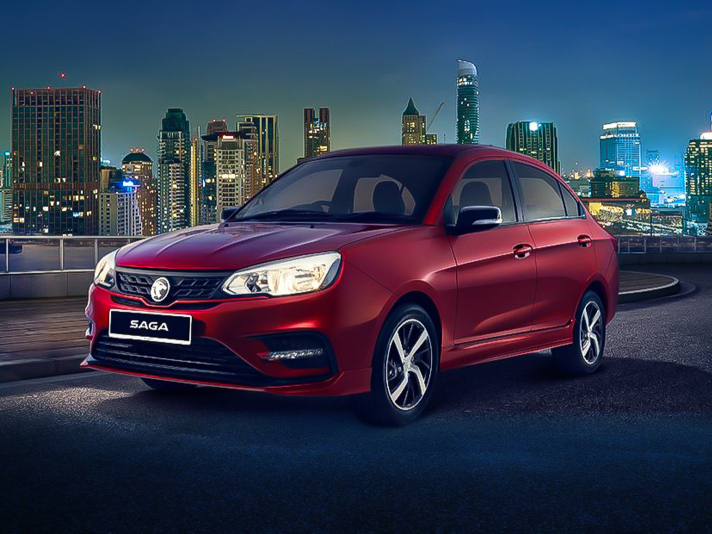
Proton Saga Interior Review: Affordable Yet Stylish for Everyday Use
WilliamJul 17, 2025
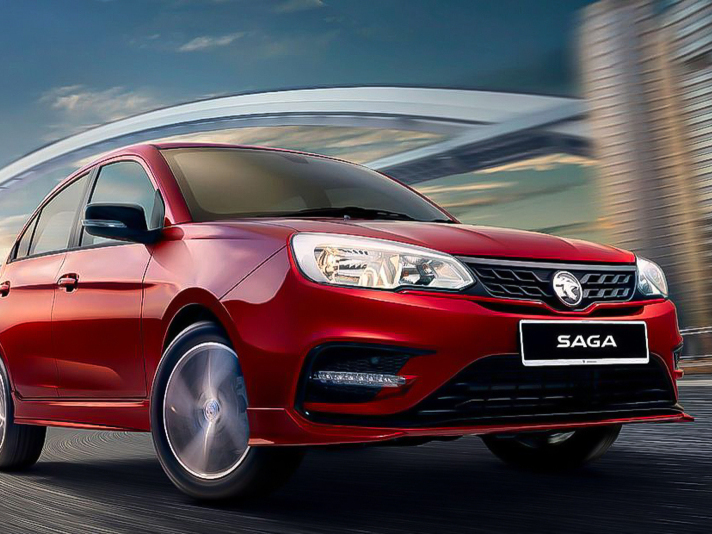
2025 Halfway Mark: All-New Proton Saga Coming Soon!
JohnMay 30, 2025
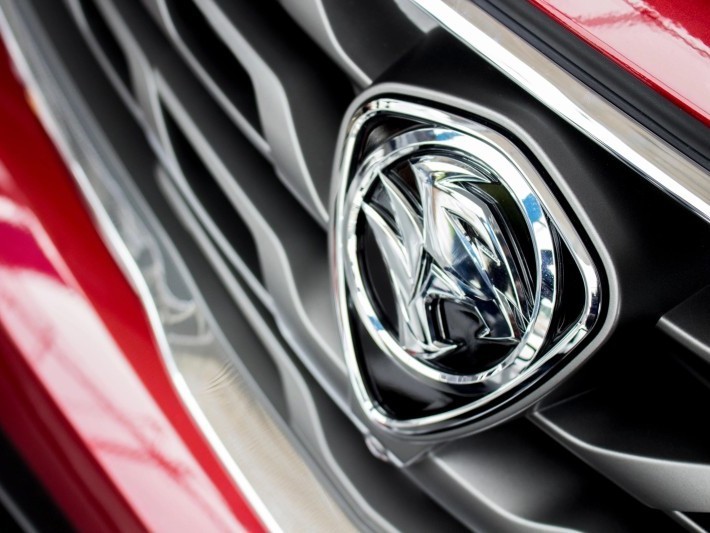
Proton Recorded Sales of 13,918 Vehicles in March, Marking a Significant MOM Increase of 23.9%
AshleyApr 10, 2025
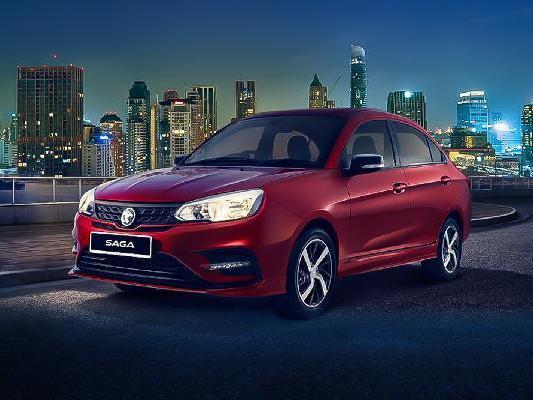
Proton Saga: A Clear Overview of Configurations and Costs of models
LienMar 25, 2025
View More






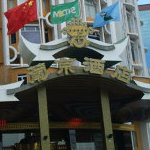





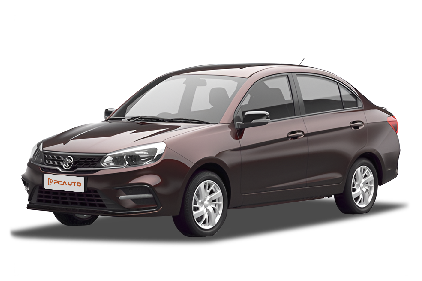





Pros
Cons